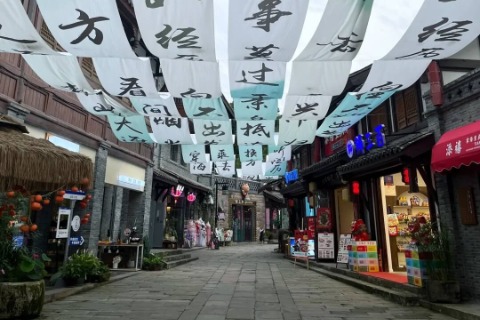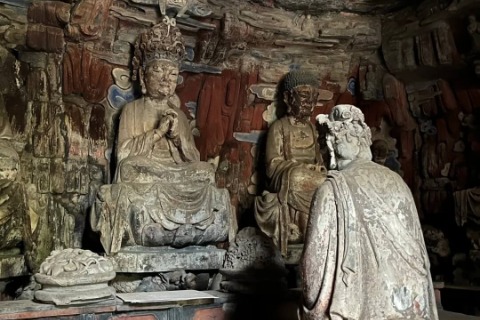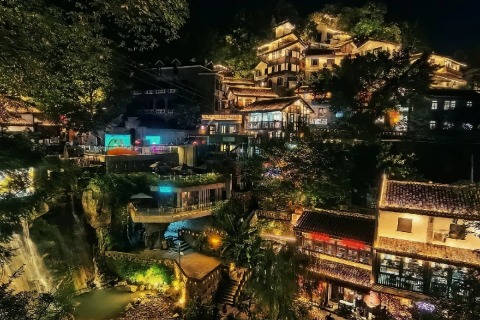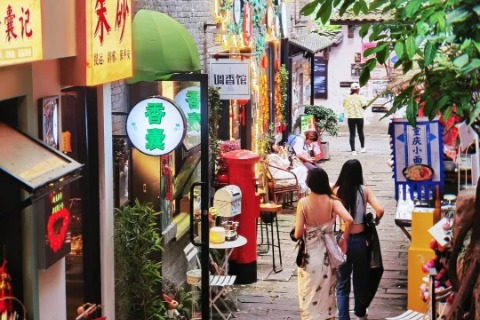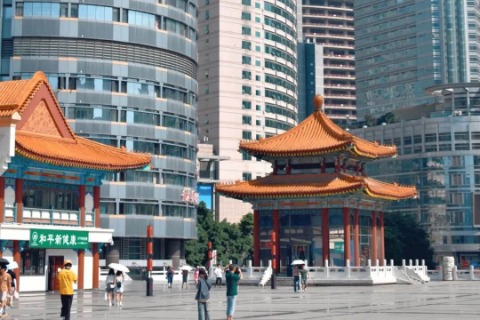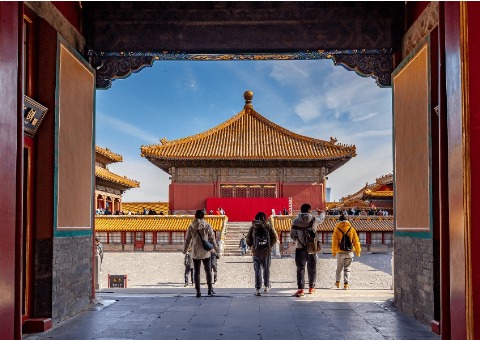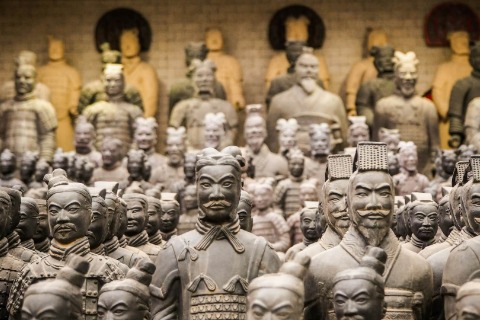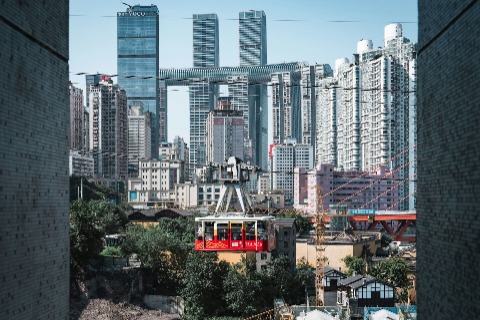Jinsha Site Museum
The longest-continuing, best-preserved, and most richly buried ancient relics in China.
The Jinsha Site Museum (金沙遗址) is home to the longest-continuing, best-preserved, and most richly buried ancient relics in China. The museum’s exhibitions provide a comprehensive view of the glorious Ancient Shu Kingdom from various angles, including archaeological sites, ecological environments, daily life, religious rituals, and cultural backgrounds.
The history of the Jinsha Site Museum (金沙 遺址) dates back to February 8, 2001, when a large number of gold, jade, bronze, and ivory artifacts were unexpectedly discovered during municipal construction in the western suburbs of Chengdu. This marked a significant discovery of Ancient Shu civilization. The museum officially opened to the public in April 2007. Built on the Jinsha site, it features two main structures: the relics hall and the exhibition hall. Inside, there are many important artifacts, the most famous of which is the “Sun God Bird (太阳神鸟)“ gold foil ornament. This hollowed-out design symbolizes the sun, showcasing the Ancient Shu people’s worship of the sun and their extraordinary imagination.
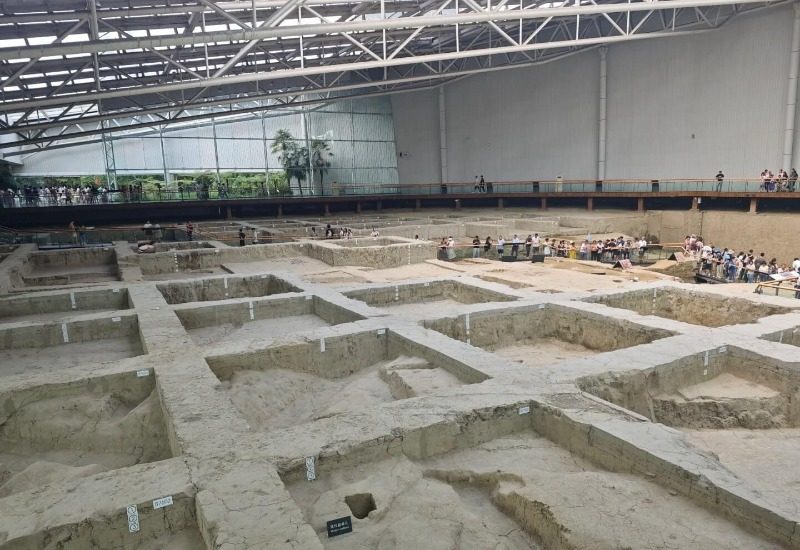
Table of Contents
Highlights of the Jinsha Site Museum
Relics Hall (Chinese name: 遗迹馆)
The Relics Hall showcases the excavation site of a large sacrificial area at the Jinsha site, including the original ecological display of the excavation and large root remains. Over 60 sacrificial remains have been discovered here, along with more than 6,000 precious artifacts, including gold, bronze, jade, stone, bone, and wooden items, as well as tons of ivory and numerous wild boar tusks, deer antlers, and pottery.
Visitors can observe the archaeological excavation site up close and feel the grandeur of the sacrificial activities of the Ancient Shu Kingdom from 3,000 years ago. The design of the Relics Hall not only highlights the brilliance of Ancient Shu civilization but also features VR interactive equipment, allowing visitors to travel back 3,000 years in a virtual world and experience the charm of Ancient Shu culture.
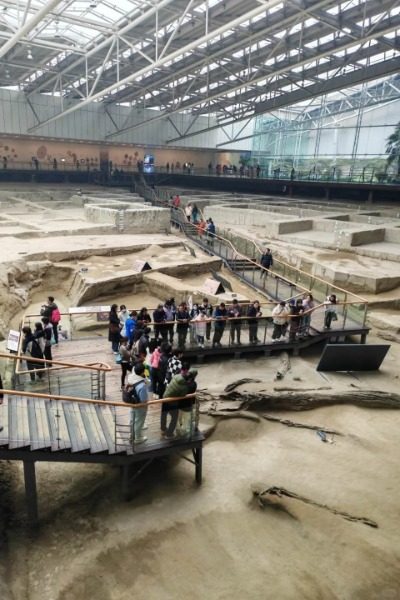
Exhibition Hall (陈列馆)
The Exhibition Hall covers an area of 16,200 square meters and is composed of five sections: Ancient Home, Shadows of the Royal Capital, Endless Heaven and Earth, Treasures of a Thousand Years, and Interpreting Jinsha.
The Ancient Home section combines large background images with real-life displays to recreate the living environment of the Jinsha ancestors 3,000 years ago, showcasing their daily life and ecological setting. The Shadows of the Royal Capital section presents the archaeological findings from the Jinsha site, including reconstructions of residences, tools, pottery making, metallurgy, jade crafting, and tombs, vividly illustrating various aspects of social life in the Ancient Shu Kingdom.
The Endless Heaven and Earth section depicts the grand scenes of religious rituals performed by the Ancient Shu people, featuring exquisite artifacts such as gold, bronze, jade, stone, and ivory. The Treasures of a Thousand Years area displays over 30 key artifacts from the Jinsha site, primarily highlighting the “Sun God Bird” gold ornament. The museum’s treasures include the “Sun God Bird” gold ornament and the “Golden Mask.”
The Interpreting Jinsha section outlines the development of Ancient Shu culture in Sichuan before the Qin Dynasty, helping visitors understand the origins and significance of the Jinsha site.
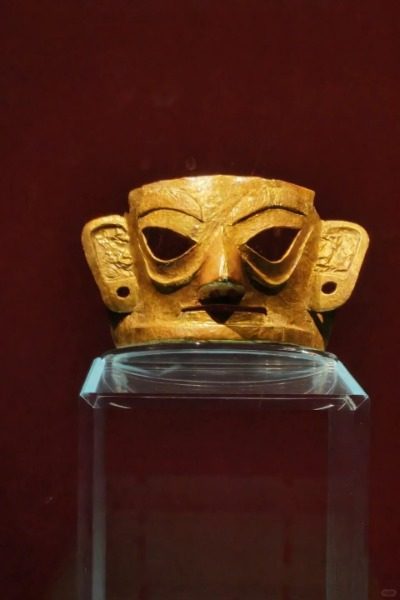
Deer Park (鹿苑)
Since the archaeological discovery of Jinsha culture in 2001, a large number of deer antler remains have been unearthed at the Jinsha site, indicating that at least thousands of sika deer and water deer thrived here. These antlers were used in solemn religious rituals to pray for favorable weather, highlighting the significant status of deer at that time.
Currently, the Jin Sha Deer Park houses 30 sika deer, recreating the harmonious coexistence of people and nature during the Ancient Shu period. The park is set in a lush environment surrounded by bamboo and trees, where the deer leisurely graze on grass, sometimes frolicking and sometimes quietly calling to one another.
Due to the breeding season for sika deer occurring from May to June, mother deer are particularly protective of their fawns. For the safety of visitors, the deer will not be allowed to come into close contact with people during this time.
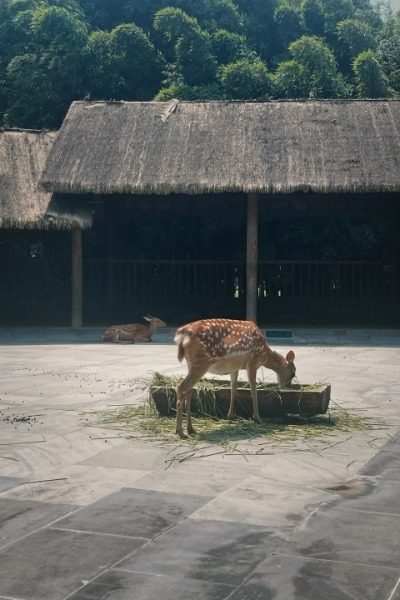
Ebony Forest (乌木林)
The Ebony Forest at the Jinsha Museum is located in the southeastern corner of the museum and features nearly a hundred giant pieces of ebony. Also known as “submerged wood” or “sedimentary wood,” ebony forms when trees are buried in ancient riverbeds or ravines due to landslides, floods, or other geological changes. Over thousands of years, in an oxygen-deprived, high-pressure environment, these trees undergo a carbonization process.
Ebony not only possesses the elegance of wood but also the mystique of stone, earning it the nickname “plant mummy.” Visitors can explore the Ebony Forest to learn about the ecological environment and climate changes during the Ancient Shu period. The ebony in this forest dates back between 3,000 to 40,000 years and is primarily found in the Minjiang River basin within the Sichuan Basin.
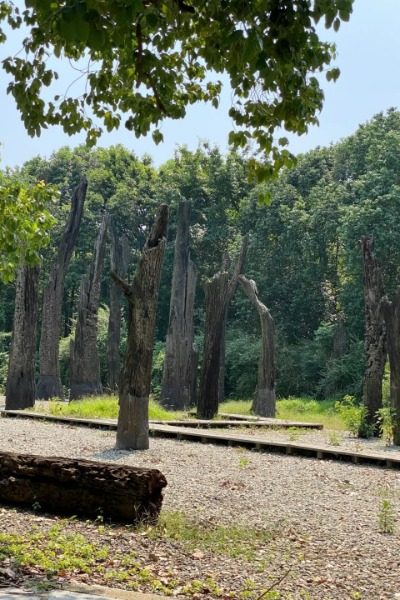
Q&A About the Jinsha Site Museum
1. What is Ancient Shu Civilization?
Ancient Shu refers to the ancient state located in the Sichuan Basin, also known as the Shu Kingdom or Ancient Shu Kingdom. It was established in the early Shang Dynasty and ultimately fell to the Qin State in 316 BC. The Ancient Shu civilization began with primitive clan tribes and, through long-term development and integration, eventually transformed into a feudal state. Key archaeological sites include the Jinsha Site Museum Chengdu and the Sanxingdui Site Museum in Guanghan.
Ancient Shu civilization boasts a rich cultural heritage, including advanced bronze smelting and gold processing techniques. Archaeological discoveries, such as those at the Sanxingdui and Jinsha sites, have unearthed a wealth of precious artifacts, including bronze standing figures, bronze sacred trees, and the Sun God Bird, showcasing the brilliance of Ancient Shu civilization.
2. What is the relationship between the Chengdu Jinsha Site Museum and the Sanxingdui Museum?
Scholars in China believe that the Jinsha Site is an inheritance and continuation of the Sanxingdui culture. The artifacts and artistic styles unearthed from both sites are very similar, reflecting the shared beliefs and worship practices of the Ancient Shu people, such as their reverence for large trees and the sun.
3. Can visitors feed the deer at the Jinsha Site Museum?
Yes, visitors can feed the sika deer at the Jinsha Site Museum. This activity is available every day from 9:40 to 10:40 AM. During this time, the sika deer are allowed to roam in the park, and visitors can receive grass from the caretakers to feed them, allowing for close interaction with the deer.
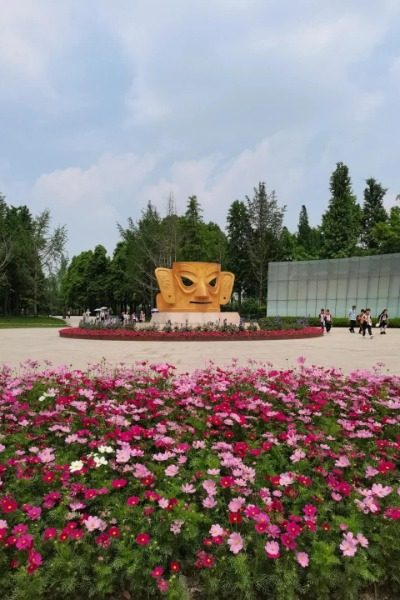
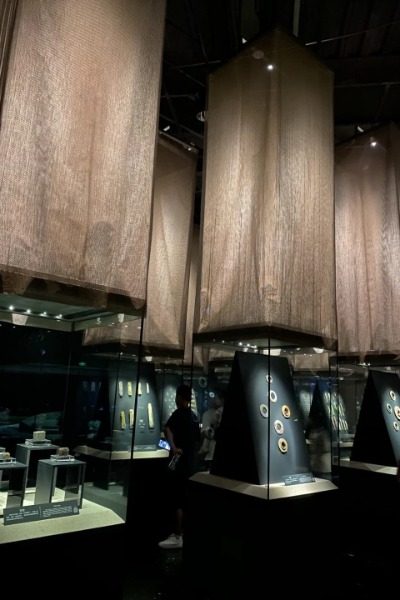
Hours and Fees
Hours
- Daily from 9:00 AM to 6:00 PM, with last entry at 5:00 PM. Closed on Mondays (except during public holidays and in January, February, July, and August).
Admission
- 70 CNY (approximately 10 USD).
How to Get to the Jinsha Site Museum
By Bus
- The bus routes to reach the Jinsha Site Museum include: 7, 82, 83, 100, 111, 123, 147, 163, 175, and 209.
By Subway
- Metro Line 7: Passengers can exit at Exit C of Jinsha Site Museum Station (金沙遗址博物馆站), and after a short walk, they will reach the museum’s main entrance.
- Metro Line 2: Passengers can exit at Exit B of Yipin Tiantang Station (一品天下站), and after a 10-minute walk, they will reach the Jinsha Site Museum.
How Visitors Rate the Jinsha Site Museum
International tourists
Local tourists from China
The layout of the museum is well thought out. Each exhibition area is organized, making it easy to get lost in the atmosphere of that time. The environment is really comfortable too; the lighting and air conditioning are just right, so it’s not tiring to explore.
It was a bit crowded, but that just shows how popular it is. Overall, I had a fantastic experience. I definitely want to go back next time I have the chance, and I recommend it to anyone interested in history and culture. It’s absolutely worth a visit!


